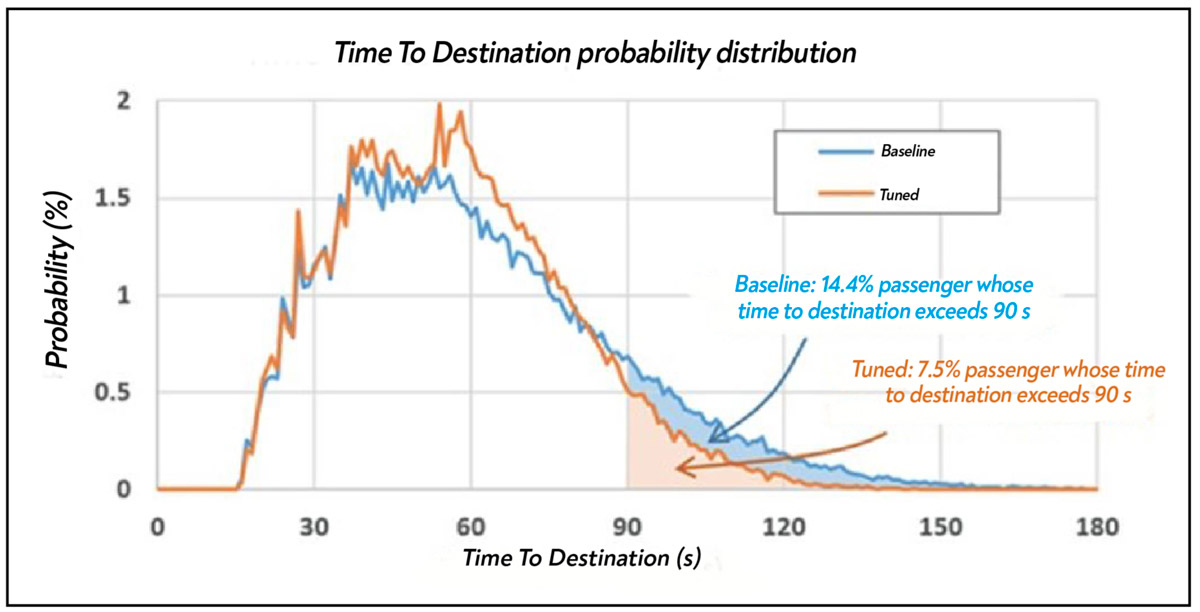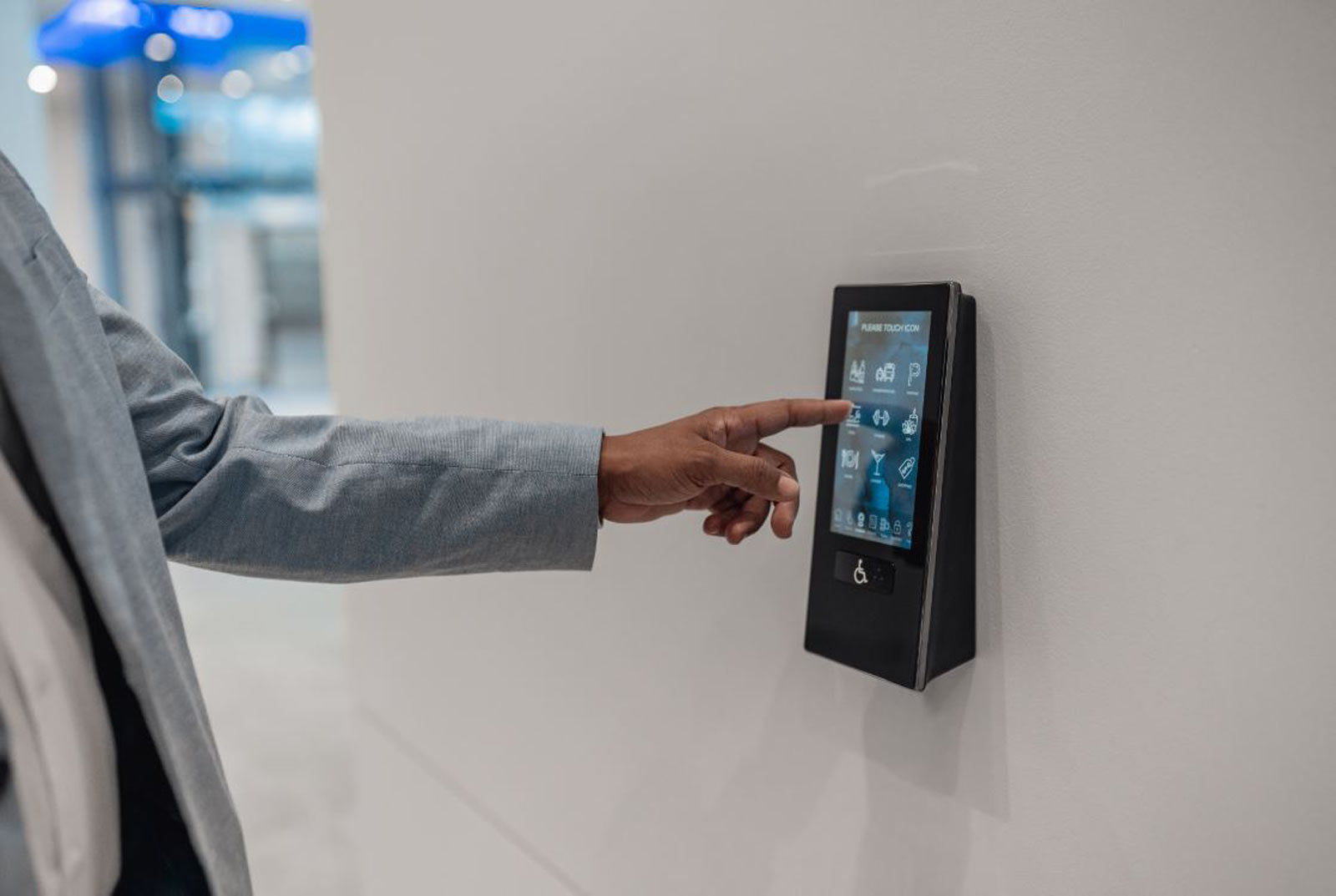by Juan Morales, Otis director, Data Science, Otis, U.S.A., Arthur Hsu, Otis dispatching fellow, Otis, U.S.A.
KEY WORDS: Elevator, Dispatcher, Predictive Analytics, Machine Learning, Artificial Intelligence.
As the world’s leading company for elevator manufacturing, installation and service, Otis maintains its competitive edge by developing the technology to lead the industry into a taller, faster and more connected world. We are building on a rich tradition of innovation and a culture that fosters imagination, enabling the creation of leading-edge technology that made Otis a world leader for dispatching in the elevator industry. With Otis NextGen Dispatcher, our engineering and data science teams are working to bring together state-of-the-art artificial intelligence (AI), machine learning (ML), Internet of Things (IoT) and big data features to take elevator dispatching to the next level.
Traffic Prediction
Dispatching should no longer be a reactive response where actions are postponed until a passenger places a call for an elevator. Traffic prediction can be leveraged to create an environment that enables predictive algorithms that not only look at the here and now, but are cognizant of possible realization of future calls. Although previous efforts to predict traffic are known in the industry, with Otis NextGen Dispatcher, data from multiple sources is efficiently ingested and harmonically combined to feed state-of-the-art ML prediction algorithms. Passenger traffic, real- time pedestrian data collected using sensors and IoT-derived information, such as weather, road traffic conditions or rail schedules, can be used to anticipate passenger demands for elevators. Data is constantly collected and periodically used to train algorithms to continuously adapt to changing traffic conditions.

Predictions are based on a supervised learning approach consisting of multiple stages, involving Gradient-Boosted (Decision) Trees and heuristic algorithms. These carefully tuned ML algorithms include time-related features, such as time of day, day of week and holiday data, among others, to predict underlying base traffic patterns. Additionally, up-to-the-minute traffic fluctuations and IoT data are used by the algorithm to adjust predictions in real time to account for specific circumstances that might materialize at a specific day or time. Whether a stray thunderstorm sweeps in or a large event is happening at one of the suites in the lobby floor, predictions are dynamically updated and dispatching decisions made to enable a seamless passenger experience.
Predictive Dispatching
A smart algorithm uses traffic predictions to dynamically make predictive dispatching decisions to optimize for performance. Once a passenger call is registered and the dispatcher assigns it to a car, this algorithm not only considers the current vertical position of the elevators in a group and the car assignments made thus far, it also anticipates future calls and auto-adjusts dispatching decisions considering the potential impact they have on future performance.
Whether the goal is to minimize wait time or time-to-destination, or to balance both depending on the time of day, an AI-based approach makes smart car assignments, avoiding myopic decisions and reducing the number of unnecessary intermediate stops, which results in a more pleasant passenger experience.

Traffic predictions can be leveraged when an elevator becomes idle so it can be dynamically pre-parked at a floor or a vicinity of floors where demand is expected to materialize. This can greatly reduce passenger wait time. We address the problem of pre-parking elevators by solving a stochastic optimization problem using a Neighborhood Search heuristic algorithm. To maximize the benefits of predictive parking, the algorithm takes a holistic look at predictions of calls originating through the entire set of floors that are served by the elevator group and makes parking decisions that also consider the predicted time and location where other cars will become idle. This holistic approach considering predicted demands and predicted supply of idle cars enables a robust parking strategy that hedges against numerous demand scenarios and reduces wait time (see Figure 2).
Digital Twin For Adaptive Tuning Of Dispatching Parameters
Modern dispatching algorithms inherently use a set of dispatching parameters that governs the tradeoffs between performance metrics, such as average wait time versus average time to destination, when assigning a given call to a particular car. With literally hundreds of these dispatching parameters, it is possible to tune the best set of dispatching parameters at each jobsite, but it is very tedious to do manually without being able to accurately measure the impact of each parameter change.
In Otis’ NextGen Dispatcher, every dispatcher now contains a built-in “Digital Twin,” which is a virtual model of the same elevator group that reflects the identical group configuration (number of cars, number of floors served, etc.) and which continuously stores traffic patterns as they dynamically change over time, whether on an hourly, daily or weekly basis, or systemically due to a pandemic.
This Otis Digital Twin can, among other capabilities, evaluate impact on dispatching performance many orders of magnitude faster than real time; hence, with state-of-the-art parameter optimization methods, the dispatcher can now benefit from parameter values deployed from tuning on the Otis Digital Twin based on real traffic patterns. In customizing the best performance at a particular jobsite, the NextGen Dispatcher also provides a user interface that allows customer preferences to be specified regarding different dispatching objectives, such as trading off average wait time versus long wait time, versus the number of stops experienced by passengers, versus the time to destination, etc.
The NextGen Dispatcher parameter tuning algorithms can also tune multiple sets of dispatching parameters to accommodate different objectives at different critical traffic periods during the day or during the week. For instance, during the morning up-peak period in an office building where crowding at the ground-floor lobby is an issue, the primary objective can be to reduce wait time at the ground-floor lobby. During the lunch-hour peak, the focus may shift to reducing wait times at the cafeteria floors. During regular business hour traffic, the focus may shift to reducing total time to destination. From experimentation, the tuned parameters are able to impact objectives, such as average wait time, average time to destination and long waiting times (for instance, measured as the percentage of passengers waiting more than 60 s).

As an example, six weeks of data was collected from a commercial office building during a 1-h morning peak traffic period representing more than 70,000 passenger calls. The illustration above shows that with the baseline parameters, the percentage of passengers whose time to destination exceeded 90 s was 14.4%. After tuning using traffic data that preceded this six-week period, the percentage dropped to 7.5%, representing a 48% reduction. At the same time, the average time to destination dropped from 61.1 s with the baseline parameters down to 56.9 s, representing a 7% reduction. Using a different set of parameters tuned to improve wait times, the average wait time dropped from 14.9 s to 11.9 s, representing a 20% improvement while, at the same time, the long wait times, as measured by the percentage of passengers wait more than 60 s, dropped from 1.06% to 0.37%, representing a 65% improvement.
Conclusions
Otis NextGen Dispatcher is bringing together state-of-the-art AI, ML, IoT and big data features to take elevator dispatching to the next level. Initial work has demonstrated its ability to better predict traffic demand and adapt to buildings’ and occupants’ changing needs. Predictive parking is showing the potential to better position idle elevators and improve perceived comfort. Adaptive tuning of dispatching parameters allows customizing and adapting elevator group response to improve performance or comfort to meet the needs of the building owner or tenants.
Get more of Elevator World. Sign up for our free e-newsletter.










